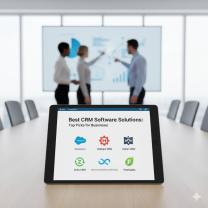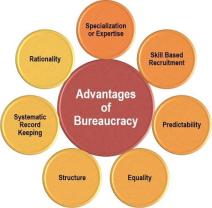What is the role of top level management?
Top-level management, also known as senior management or executive management, plays a pivotal role in guiding and directing an organization. These executives are responsible for making strategic decisions that shape the overall direction and success of the company. The role of top-level management involves a variety of key functions and has a significant impact on the organization. Here are the primary roles and functions of top-level management:
Strategic Planning:
- Top-level management is responsible for developing the organization's strategic plans. This involves setting long-term goals, defining the mission and vision, and outlining the strategies to achieve these objectives.
Decision-Making:
- Executives at the top level make high-stakes decisions that influence the entire organization. These decisions can include matters such as mergers and acquisitions, major investments, organizational structure changes, and entry into new markets.
Setting Objectives and Goals:
- Top-level management establishes overall objectives and performance goals for the organization. These objectives serve as a guide for all levels of the organization and help align efforts toward common outcomes.
Resource Allocation:
- Executives allocate resources, including financial, human, and technological resources, to support strategic initiatives. They prioritize and determine where resources should be invested to maximize returns.
Organizational Culture and Values:
- Top-level management plays a crucial role in shaping and reinforcing the organizational culture and values. They set the tone for the workplace environment and promote a culture that aligns with the company's mission.
Leadership and Direction:
- Executives provide leadership and direction to the entire organization. They inspire, motivate, and guide employees to work towards common goals and contribute to the success of the company.
Risk Management:
- Top-level management is responsible for identifying and managing risks that could impact the organization. This involves assessing potential challenges, implementing risk mitigation strategies, and ensuring compliance with regulations.
Financial Oversight:
- Executives, particularly the Chief Financial Officer (CFO), oversee the financial health of the organization. They manage budgets, financial reporting, and strategic financial planning.
Monitoring Performance:
- Top-level management monitors the performance of the organization against key metrics and goals. They use performance indicators to assess progress and identify areas that require attention or improvement.
Communication and Representation:
- Executives represent the organization externally, engaging with stakeholders such as investors, customers, regulators, and the media. They communicate the company's vision, values, and performance to external parties.
Succession Planning:
- Top-level management is involved in succession planning, ensuring that there is a pipeline of talent ready to assume key leadership roles in the future. This includes identifying and developing high-potential individuals within the organization.
Technology Adoption and Innovation:
- Executives stay informed about technological advancements and promote innovation within the organization. They make decisions regarding the adoption of new technologies that can enhance efficiency and competitiveness.
Legal and Ethical Compliance:
- Executives ensure that the organization operates in compliance with laws, regulations, and ethical standards. They establish and uphold a culture of integrity and ethical conduct.
Crisis Management:
- In times of crisis or unforeseen challenges, top-level management takes a leadership role in managing and resolving issues. They develop and implement crisis management plans to navigate through difficult situations.
Stakeholder Relations:
- Executives actively manage relationships with various stakeholders, including shareholders, employees, customers, suppliers, and the community. They address stakeholder concerns and maintain positive relationships.
Market Analysis and Adaptation:
- Top-level management monitors industry trends, conducts market analysis, and adapts the organization's strategies to stay competitive. They are responsible for positioning the company effectively in the market.
The role of top-level management is multifaceted and requires a combination of strategic thinking, leadership skills, and a deep understanding of the business environment. The decisions and actions of top-level executives have a profound impact on the organization's success and long-term sustainability. Effective top-level management is essential for steering the organization toward its goals and ensuring its continued growth and prosperity.
Top-Level Management: The Captains of the Organizational Ship
Top-level management, often referred to as the C-suite, occupies the pinnacle of the organizational hierarchy. They are the captains of the ship, navigating the tides of the market and steering the company towards success. Let's delve into their role, significance, and impact:
1. Role and Significance:
- Strategic Architects: They set the long-term vision and define the overarching goals that guide the entire organization.
- Decision-Makers: They make impactful decisions about resource allocation, investments, mergers and acquisitions, and new ventures.
- Performance Overseers: They monitor the organization's health, analyze data, and make adjustments to optimize performance.
- External Representatives: They represent the company externally, building partnerships, managing finances, and navigating regulations.
- Culture Champions: They set the tone for the company culture, influencing employee motivation, engagement, and values.
2. Strategic Direction and Decision-Making:
- Formulating Strategies: Top managers analyze market trends, identify opportunities, and develop strategies to gain a competitive edge.
- Setting Goals: They establish clear and measurable goals for the organization, ensuring alignment across all departments.
- Allocating Resources: They decide how to allocate resources like finances, personnel, and technology to maximize their impact.
- Risk Management: They identify and mitigate potential risks to ensure the organization's stability and growth.
- Approving Major Decisions: All major decisions like acquisitions, investments, or new product launches require their approval.
3. Distinguishing Responsibilities:
- Focus: Top managers focus on long-term goals and strategic direction, while lower-level managers focus on day-to-day operations and tactical execution.
- Decision-Making: Top managers make impactful decisions with far-reaching consequences, while lower-level managers make decisions within their delegated areas of responsibility.
- Delegation: Top managers delegate tasks and empower lower-level managers to execute the strategy.
- External Relations: Top managers engage with external stakeholders like investors, partners, and regulators, while lower-level managers primarily focus on internal operations.
4. Impact on Overall Performance:
- Effective top-level management leads to strong financial performance, market competitiveness, and sustainable growth.
- Poor decisions or lack of vision can have detrimental consequences, impacting employee morale, customer satisfaction, and profitability.
- Their leadership sets the tone for the entire organization and influences the performance of all employees.
5. Interaction with Other Levels:
- Top-level managers communicate the strategic direction and goals to middle and lower-level managers through meetings, cascading communication plans, and performance reviews.
- They rely on middle managers to implement the strategy and provide feedback on its effectiveness.
- They may interact directly with employees to understand their needs, gather feedback, and inspire motivation.
Remember:
Top-level management plays a crucial role in shaping the destiny of an organization. Their vision, strategic prowess, and leadership directly impact the company's performance, employee well-being, and ultimate success. Understanding their responsibilities and how they interact with other levels can help you appreciate their vital contribution to the organizational fabric.
Whether you are an aspiring leader, a curious employee, or simply someone interested in the dynamics of successful organizations, delving into the world of top-level management offers valuable insights into the engine room of the corporate world.













